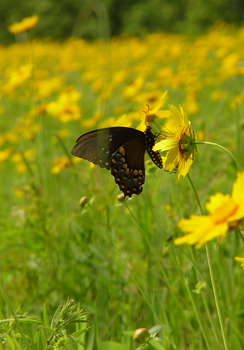Definitions of Terms
Accession – Plant material (plant, seed, or vegetative parts) collected and assigned a number to maintain it’s identity during evaluation, increase, and storage.
Cultivar – Or Variety means a subdivision of a kind which is distinct, uniform, and genetically stable. Must be distinct in that the cultivar can be differentiated by one or more identifiable morphological, physiological, or other characteristics from other cultivars. Uniform in that variations of characteristics are describable. Stable in that the variety characteristics will remain unchanged to a reasonable degree of reliability when reproduced.
Ecotype – A subdivision of an ecospecies distinctive through environmental selection.
Eco-Region – Designated area or zone of a species that have been naturally selected by
adaptability to similar environments.
Generation – Each succeeding seed production field designates a generation. Natural collection is Generation 0. Seed produced in a production area from G0 seed would be Generation 1. Seed production from G1 fields are G2, G2 production fields would produce G3 seed. There is no limit on generations. Cultivar, select and tested class seed are limited to G3 for it to be labeled within the guidelines of AOSCA.
Isolation – The distance maintained between seed production fields of the same species. Source Identified class has NO requirements for isolation. Distance requirements vary with seed classes.
Native Species – A native plant species is one that occurs naturally in a particular region, state, ecosystem, and habitat without direct or indirect human actions. Its presence and evolution in an area are determined by climate, soil and biotic factors.
Origin – As used in the seed industry applies to the State of production or propagation.
Pre-Variety Germplasm – Eligible species include indigenous or non-indigenous trees, shrubs, forbs, grasses which have not been released as a variety. This includes source identified, selected, tested, and germplasm class releases.
Seed Standards – State and Federal Seed Laws regarding labeling must be observed.
Source – The geographical location where the species was collected from. This would be for species collected from native stands.
Source Identified Class – This is propagating materials such as seed, seedlings, or other propagating materials collected from natural stands, seed production areas, seed fields, or orchards where no selection or testing of the parent population has been made.
Variety – The botanical nomenclature division consisting of more or less recognizable entities within species that are not genetically isolated from each other, below the level of sub species, and is indicated by the abbreviation “var.” in the scientific name. The rank of taxa below subspecies but above forma: a plant which retains most of the characteristics of the species, but differs in some way such as flower or leaf color, size of mature plant, etc..
Wildland Collection – Selections from natural stands. Geographical, latitudinal, or other appropriate boundaries or descriptions should be recorded.



